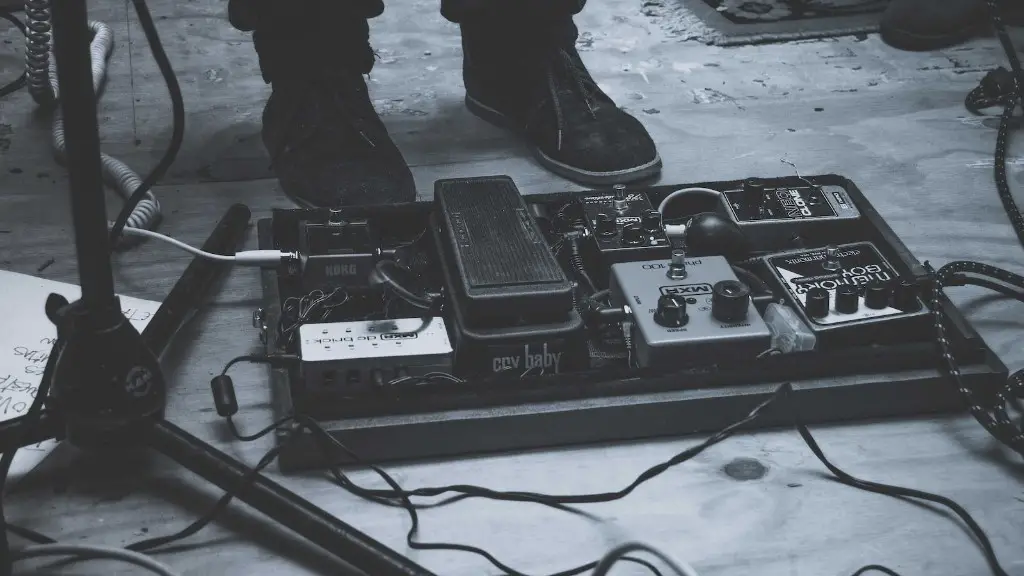Drawing a Simple Frog in Eight Easy Steps
People have been drawing frogs since time immemorial. Perhaps it’s because they are so cute, or maybe because they are so darn easy to draw. Drawing a frog doesn’t need any complex skills – mainly just a steady hand and some chalk. So let’s look at the steps for drawing a simple frog.
Step 1: Sketch a basic outline of your frog
A frog can be a fun and easy way to practice your drawing skills. First, draw an outline of the frog’s body, head and limbs. This will serve as the base of your drawing and will make it easier to add the finer details later on.
Step 2: Add details to the body, head, and feet
To make your frog look more realistic, add details to it. Add the bulging eyes, small nostrils and mouth. Make sure to draw the legs and feet in proportion to the body.
Step 3: Draw the lines to separate the skin
Using a darker shade of chalk, draw the lines that separate the different sections of skin. Think of it as a kind of scale pattern – draw a few short lines and leave some free space in between them.
Step 4: Add texture to the back and the belly
To make your frog look more lifelike, use a different color chalk to draw a few wavy lines or circles, depending on the frog’s species. Draw the lines on the frog’s back and belly – this will give it a more three-dimensional effect.
Step 5: Contour the outline of the frog
To define the shape of the frog, use a thicker line or shading effect. This will emphasize the contour of the frog and make it look more defined and distinct.
Step 6: Draw the legs and feet
Draw the legs and feet using the same color chalk you used to draw the body. Make sure to draw the toes in proportion to the foot and the legs. If you want, you can even add some webbing between the toes.
Step 7: Make the markings on the eyes, head, and back
Using a lighter shade of color, draw the markings on the eyes, head, and back. These will give the frog a more realistic look.
Step 8: Finish the drawing with some color
Finally, use a brighter shade of color to finish your drawing. Again, use the same color to draw the lines and add the highlights and shadows to give your frog a more detailed look.
Filling in the Details on a Frog
Once you have the basic outline of your frog ready, you can start to add the details. This involves adding color to the eyes, shading the feet, and adding the patterns and textures to the skin to make your frog look more realistic.
Adding Color to the Eyes
When it comes to adding colors to the eyes, the most important thing to remember is that they should be consistent. Use the same colors for all the eyes, and avoid using too many colors. You can use different shades of the same color to make the eyes look more realistic.
Shading the Feet
The next step is to add some shading to the feet. Use a darker color to give the feet a more grounded look. Make sure to draw the toes in proportion to the feet, and to draw the webbing between them.
Adding Patterns and Textures to the Skin
When it comes to adding texture to the skin, the best way is to draw some thin lines or circles on the back and belly. This will make it look more three-dimensional and will also add some realism to your drawing.
Adding Highlights and Shadows
Adding highlights and shadows to your drawing is another way to make your frog look more lifelike. To do this, use a lighter shade of color to draw some soft, curved lines on the body and head.
Creating the Highlights
The first step is to draw the highlights. Draw some curved lines on the body, head, and limbs to give the frog a more dimensional and lifelike look. Make sure to follow a light source – you can use a lamp, a window, or even the sun.
Adding the Shadows
Once you have finished drawing the highlights, it’s time to add the shadows. Use a darker shade of color to draw some soft, curved lines on the area that is not lit up. This will add some depth to your drawing.
Finishing the Drawing With Details
Once all the basic elements of the drawing are complete, it’s time to add the details. This includes adding patterns or textures to the skin, drawing the toes, and adding the webbing if necessary.
Adding Texture to the Skin
Adding texture to the skin is a great way to make your frog look more lifelike. Use a different color chalk to draw a few wavy lines or circles, depending on the frog’s species. Make sure to draw the lines on the back and belly for a more three-dimensional effect.
Drawing the Toes
Make sure to draw the toes in proportion to the feet and the legs. You can add some webbing between the toes, if necessary. This will give the feet a more realistic and lifelike look.
Finishing Touches
Finally, add some finishing touches to your drawing. This includes using a thick line to define the contour of the frog, adding a few details like spots or stripes, and using a brighter shade of color to fill in the details.
Putting It All Together
Drawing a frog doesn’t have to be complex or intimidating. All it takes is a steady hand, some chalk, and a little bit of creativity. Follow the steps outlined in this article and you will soon be able to draw a simple frog and create a great piece of art.

